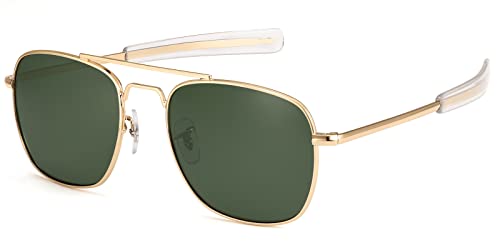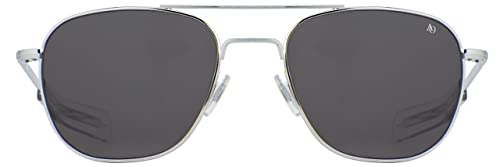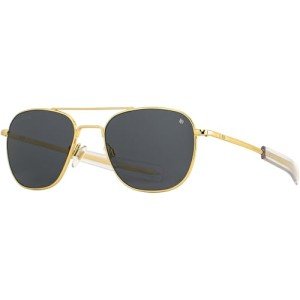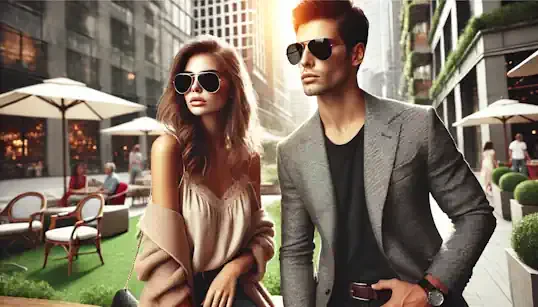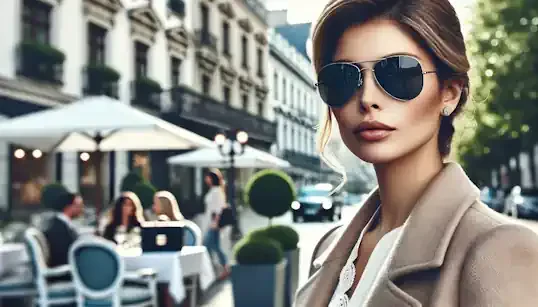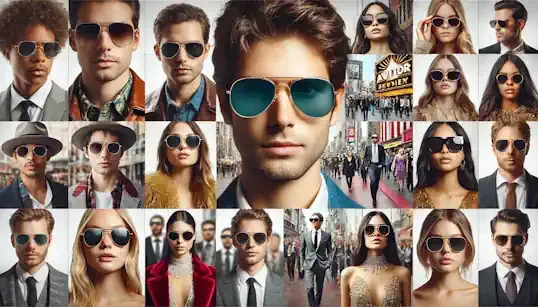Think of aviators. The very word conjures a cascade of indelible images. Maverick, silhouetted against a fiery sunset, his visor reflecting the boundless sky. Steve McQueen, detached and impossibly cool, a glint of metallic frame beneath his helmet. Countless anonymous faces, etched in iconic photographs, framed by the unmistakable teardrop lens, a silent language of confidence and understated power. Aviator sunglasses are not merely eyewear; they are cultural shorthand, instantly recognizable emblems that transcend fleeting moments in fashion. They are, quite simply, iconic. But in a world relentlessly driven by the new, the now, the next fleeting trend, where does an icon like the aviator truly stand? Are they immutable, forever perched above the fray of fashion’s capricious currents? Or, in the ever-shifting landscape of style, are even the most enduring icons destined to become, at least for a time, simply… trendy? This is the central question we must explore: in the modern age, are aviator sunglasses a steadfast icon, or have they become, or are they in danger of becoming, just another style riding the ephemeral waves of ever-changing trends?
To understand the complex relationship between the aviator and the trend, we must first delve into the very foundations of iconicity. What is it that elevates a piece of clothing, an accessory, a design, from mere fashion item to enduring icon? It’s a journey that begins not in the realm of style magazines or designer runways, but in the stark world of practical necessity. Aviator sunglasses were not born of a stylist’s whim, but from a pressing functional need: to shield the eyes of pilots soaring to ever-greater heights, battling blinding glare and unforgiving sunlight. Their very origin story is steeped in practicality, in purpose-driven design. Invented in the 1930s for military aviators, their distinctive shape, the teardrop lens, was not an arbitrary aesthetic choice but a carefully considered design element, maximizing peripheral vision and ensuring comprehensive eye coverage within the confines of a cockpit. The thin metal frame, lightweight and durable, was dictated by the demands of flight, prioritizing functionality and minimizing obstruction. These were tools, designed for a specific purpose, not fashion accessories.
Yet, something alchemic happened as these functional tools migrated from military bases to civilian life. The very features born from necessity – the distinctive lens shape, the minimalist metal frame, the double bridge – became, almost paradoxically, emblems of effortless style. The functional design, honed for performance, possessed an inherent aesthetic balance, a clean, industrial chic that resonated beyond its original context. This crossover from purely functional to fashionable wasn’t sudden, but a gradual accretion of cultural associations and endorsements. Military pilots, returning from daring missions, became figures of admiration and emulation, and their eyewear, a symbol of their bravery and skill, naturally followed suit. Hollywood, ever the amplifier of cultural trends, quickly recognized the potent visual language of aviators. Silver screen icons, from Marlon Brando to Paul Newman, adopted aviators, imbuing them with a cool detachment, a sense of rugged masculinity, an air of effortless charisma. Film characters, embodying adventure and independence, cemented the aviator's image in the collective consciousness. Think of Steve McQueen’s unwavering gaze behind his aviators in Bullitt, or the rebellious swagger of Tom Cruise’s Maverick in Top Gun – these cinematic moments etched aviators into the very fabric of popular culture. Music icons, too, from rock stars to counter-culture figures, embraced aviators as part of their rebellious and individualistic image, further amplifying their association with coolness and nonconformity. These cultural touchstones, these repeated visual endorsements across film, music, and popular culture, weren’t fleeting trends; they were sustained cultural narratives that cemented the aviator’s iconic status, weaving them into a lasting image of confidence, adventure, and inherent style.
This enduring appeal, this ability to transcend generational shifts and stylistic evolutions, stems in part from the inherent universality of the aviator design. Unlike some fashion items that are rigidly gendered or cater to specific age groups, aviators possess a remarkable fluidity. They are equally at home on men and women, appealing to a wide age range, and adaptable to diverse style preferences. This universality is rooted in their inherent design balance – they are both rugged and refined, capable of projecting both masculine strength and feminine coolness, depending entirely on how they are styled and worn. Their inherent versatility further solidifies their iconic status. Aviators are not confined to a single wardrobe or occasion. They can be effortlessly integrated into casual everyday looks, elevated smart casual ensembles, or even add a touch of unexpected coolness to more formal attire. This adaptability, this ability to seamlessly transition across stylistic landscapes, contributes significantly to their enduring appeal and their sustained relevance in a world of constantly shifting fashion trends.
But fashion, by its very nature, is a realm of constant evolution, a cyclical dance of emergence, peak, decline, and often, intriguing resurfacing. Understanding the nature of fashion trends, their driving forces and cyclical patterns, is crucial to assessing the aviator's position within this dynamic landscape. Fashion trends are not random occurrences; they are shaped by a complex interplay of factors. The human desire for novelty is a primary driver, a constant craving for the “new,” the “fresh,” the “different” that pushes style forward, often in cyclical patterns. Cultural shifts, reflecting changes in societal values, technological advancements, and evolving lifestyles, profoundly influence fashion trends, mirroring and shaping the zeitgeist. Designer influence, the creative visions of fashion’s leading figures, plays a crucial role in dictating the direction of trends, setting the stylistic agenda for each season. Marketing and advertising, with their sophisticated strategies to create desire and influence consumer behavior, further amplify and accelerate trend cycles. Celebrity endorsements, the potent visual influence of pop culture icons, can catapult a trend into mainstream consciousness, solidifying its popularity and accelerating its lifecycle.
Fashion trends, particularly in accessories and eyewear, are characterized by their inherently cyclical nature. What was once considered cutting-edge becomes mainstream, then dated, and eventually, potentially, vintage and then, perhaps, “retro” and cool again. This cyclical pattern is driven by the very nature of fashion’s pursuit of novelty; once a style becomes ubiquitous, the desire for something “new” inevitably arises, pushing trends in different directions. Eyewear, beyond its essential functional purpose of vision correction and sun protection, is profoundly susceptible to fashion trends. Sunglasses, in particular, have become potent style accessories, reflecting and amplifying current fashion sensibilities. Eyewear trends manifest in a multitude of ways: frame shapes shift from oversized to minimalist, materials fluctuate between bold acetate and delicate metals, colors cycle through vibrant hues and muted neutrals, lens tints embrace mirrored finishes and subtle gradients, and embellishments range from bold logos to understated detailing. Examples of past and current eyewear trends abound: the oversized frames of the 70s and 80s, the angular cat-eye shapes that have seen multiple revivals, the resurgence of colored lenses, the minimalist wire frames of the 90s – each marking a distinct moment in eyewear fashion history. This constant churn, this relentless pursuit of “newness,” creates a dynamic and ever-evolving landscape within the eyewear market. The pressure to innovate, to introduce fresh designs, to align with current fashion sensibilities, is a constant force, shaping the offerings of eyewear brands and influencing consumer choices. Eyewear brands, therefore, navigate a delicate balance: maintaining their core brand identity and timeless styles while simultaneously incorporating trend elements to remain relevant, desirable, and attuned to the ever-shifting currents of fashion.
So, where do aviator sunglasses, this seemingly immutable icon, fit within this relentless trend mill? The answer is nuanced: aviators, while fundamentally iconic, are not entirely immune to the influence of fashion trends. Instead, they have demonstrated a remarkable ability to subtly adapt and reinterpret themselves through the lens of contemporary style, without ever losing their core, recognizable identity. This is the key to their enduring relevance – not rigid resistance to change, but a clever dance of adaptation and reinterpretation. Over the years, aviator sunglasses have undergone subtle, trend-driven adaptations, demonstrating their capacity to evolve without sacrificing their iconic essence. Frame material variations, for example, offer a prime illustration. While classic aviators are defined by their thin metal frames, contemporary interpretations have embraced thicker acetate frames, offering a bolder, more substantial visual presence, aligning with trends towards chunkier eyewear styles. Colored metal frames, moving beyond traditional gold, silver, or black, have emerged, incorporating on-trend hues like rose gold, gunmetal, or even vibrant fashion colors, injecting a subtle contemporary edge while still retaining the aviator silhouette. Mixed materials, combining metal frames with acetate accents, or incorporating wood or carbon fiber elements, further demonstrate the aviator’s adaptability, allowing for textural contrasts and subtle stylistic updates that resonate with modern design sensibilities.
Lens color trends have also subtly influenced aviator design. While classic aviator lenses are often grey, green, or brown, mirroring and colored tints have become increasingly prevalent in contemporary interpretations. Mirrored lenses, reflecting current trends towards bolder, more statement-making eyewear, add a futuristic or sporty edge to the classic aviator form. Colored tints, from vibrant blues and pinks to subtle gradient lenses, allow for personalization and alignment with current color palettes and fashion moods, injecting a playful or subtly on-trend element without fundamentally altering the iconic shape. Even subtle shape modifications, almost imperceptible to the untrained eye, reflect the influence of broader eyewear trends. Lens sizes, for example, have subtly fluctuated over time, with slightly larger or smaller lens proportions emerging to align with prevailing eyewear silhouettes. Subtle variations in frame angles, perhaps a slightly flatter brow line or a more pronounced curve to the temples, demonstrate a nuanced responsiveness to contemporary design aesthetics. The emergence of “flat-top” aviators, characterized by a straighter brow bar and a more angular overall shape, represents a more overt, yet still recognizable, adaptation to current trends towards geometric and angular eyewear styles. It is crucial to note that these adaptations, these trend-driven reinterpretations, are not radical departures from the core aviator design. They are subtle evolutions, nuanced variations that refresh the iconic form, keeping it relevant and appealing to contemporary sensibilities without sacrificing the fundamental DNA of the aviator silhouette.
Intriguingly, certain fashion trends can actually act as catalysts, re-popularizing aviator sunglasses or amplifying their inherent appeal. Retro fashion revivals, for example, cyclical returns to past decades’ styles, often bring aviators back into the fashion forefront. Revivals of 70s, 80s, or even earlier vintage aesthetics naturally re-introduce aviators as quintessential accessories of those eras, creating renewed appreciation and demand for the classic silhouette. Military-inspired trends, consistently recurring in fashion cycles, directly amplify aviator popularity. Aviators’ military origins make them inherently aligned with military-inspired clothing and accessories, creating a natural and stylistically resonant pairing that boosts their trend relevance whenever military aesthetics are in vogue. Minimalist trends, with their emphasis on clean lines, functional design, and understated elegance, often create a fertile ground for aviator resurgence. Aviators’ inherent minimalist aesthetic, their clean lines and functional origins, perfectly align with minimalist fashion sensibilities, making them a natural choice for those seeking understated yet iconic eyewear within minimalist wardrobes. These examples demonstrate that trends are not always antagonists to iconicity; in fact, certain trends can actively contribute to the re-emergence and amplified popularity of classic styles like aviators, highlighting their enduring relevance and inherent adaptability.
Conversely, it is true that some extreme or very specific fashion trends might, at least temporarily, seem at odds with the inherent timelessness of aviators. Overly ornate eyewear trends, characterized by excessive embellishments, bold colors, or unconventional shapes, might appear to clash with the clean lines and understated cool of classic aviators. Similarly, hyper-feminine or excessively delicate eyewear trends might seem stylistically dissonant with the more unisex or traditionally masculine associations of aviators. However, even in these instances of potential stylistic tension, discerning consumers and fashion-forward individuals navigate these apparent clashes with nuanced strategies. Choosing aviator variations that subtly nod to current trends, perhaps a colored lens aviator paired with a minimalist trendy outfit, allows for a subtle integration of trend elements while still retaining the iconic aviator silhouette. Intentionally contrasting iconic aviators with very trendy or maximalist outfits can also be a powerful style statement, creating an edgier, more unexpected, and deliberately individualistic look. This deliberate stylistic tension, this conscious juxtaposition of icon and trend, can be precisely what makes a look interesting and fashion-forward. Ultimately, the true strength of an icon like the aviator lies in its resilience, its ability to withstand, and even sometimes benefit from, temporary stylistic tension with fleeting trends. Its inherent design strength and cultural resonance are powerful enough to endure, and even transcend, the ever-shifting sands of fashion.
The enduring power of the aviator icon, its remarkable resilience in the face of ever-changing trends, stems from several key factors, rooted in its inherent design, functionality, and cultural resonance. The strength of the aviator’s core design principles is perhaps its most potent defense against fleeting trends. The balanced proportions of the teardrop lens, the clean lines of the metal frame, the functional elegance of the double bridge – these design elements are rooted in principles of good design that transcend mere fashion fads. Their aesthetic appeal is not dependent on novelty or trend-driven embellishment, but rather on a fundamental sense of visual harmony and functional elegance that remains consistently appealing across generations. Functionality, in fact, serves as a crucial foundation for the aviator’s enduring iconicity. At their heart, aviators are effective sunglasses, designed to protect the eyes and enhance vision in bright conditions. This core functionality, this inherent practicality, remains timeless and universally relevant. While fashion trends may dictate aesthetic preferences, the fundamental need for good eye protection and comfortable vision remains constant, ensuring the ongoing relevance of well-designed sunglasses like aviators, regardless of fleeting stylistic whims. The timeless coolness and classic appeal intrinsically associated with aviators possess a consistent resonance that transcends trend cycles. The “cool factor” attributed to aviators, cultivated through decades of cultural associations and celebrity endorsements, is not a trend-dependent phenomenon; it is an ingrained perception, a deeply rooted stylistic archetype that consistently resonates with individuals seeking to project confidence, effortless style, and a timeless sense of cool. “Classic” and “cool” are themselves enduring concepts in style, and aviators embody both, ensuring their continued appeal even as specific manifestations of coolness and classicism evolve slightly over time.
Furthermore, aviators are linked to enduring values and archetypes that are not contingent on fleeting trends. They evoke a sense of adventure, harking back to their aviation origins and their association with pilots and exploration. They project confidence, born from their association with authority figures and iconic individuals who embody self-assuredness. They convey independence, echoing the rebellious spirit of counter-culture movements and the individualistic style of rock and roll icons who adopted them. They represent practicality, rooted in their functional design and their enduring utility as effective sunglasses. And they embody effortless style, a seemingly nonchalant yet undeniably chic aesthetic that resonates with those seeking understated sophistication. These enduring values, these archetypal associations, are not trend-dependent; they are deeply ingrained in the cultural perception of aviator sunglasses, ensuring their lasting relevance and continued appeal across generations, regardless of the specific trends dominating any given fashion moment. Finally, brand legacy and strategic marketing actively cultivate and reinforce the iconic status of aviator sunglasses, ensuring their continued prominence in the eyewear landscape. Major eyewear brands, particularly those with long histories associated with aviator design, actively leverage and amplify this iconic image through consistent design choices, targeted marketing campaigns, and strategic celebrity endorsements. These brands consciously cultivate the heritage and historical significance of aviators, reinforcing their iconic perception and ensuring their continued desirability in a trend-driven market. They understand that while trends may come and go, true icons endure, and they actively invest in maintaining and strengthening the iconic status of the aviator, ensuring its enduring flight in the modern age.
So, how do you, the modern individual, navigate this dynamic interplay of icon and trend when incorporating aviator sunglasses into your wardrobe? How do you style an icon in a world obsessed with the ephemeral? The answer lies in understanding both the timeless power of the aviator and its subtle adaptability to contemporary style. There are certain outfit formulas, iconic pairings, that will always work, timeless combinations that consistently amplify the inherent coolness of aviator sunglasses. A leather jacket and jeans, the quintessential rebel uniform, is a natural and eternally stylish partner for aviators, reinforcing their rugged and effortlessly cool aesthetic. A simple white t-shirt and chinos, embodying understated classicism, provides a clean and versatile backdrop that allows the aviators to become a focal point, adding a touch of refined coolness to a casual ensemble. A tailored blazer and button-down shirt, representing smart casual sophistication, benefits from the unexpected edge injected by aviators, preventing the look from feeling overly formal or stuffy. Even a simple black dress, the epitome of understated elegance, can be elevated and imbued with a touch of cool nonchalance when paired with classic aviator sunglasses. These pairings, rooted in timeless style principles, remain perpetually stylish, providing foolproof formulas for showcasing aviator sunglasses in their most iconic light.
However, the beauty of fashion lies in its dynamic nature, its constant evolution, and its embrace of contemporary trends. Styling aviators in the modern age is not about rigidly adhering to these classic pairings, but about understanding how to subtly incorporate them into current fashion sensibilities, to navigate trends without sacrificing the iconicity of the sunglasses. Pairing classic aviators with trendy clothing silhouettes offers a compelling way to bridge the gap between icon and trend. Oversized blazers, currently dominating outerwear trends, can be unexpectedly chic when juxtaposed with the streamlined silhouette of aviators, creating a balanced and fashion-forward look. Wide-leg trousers, another key trend in contemporary fashion, provide a relaxed and modern counterpoint to the classic coolness of aviators, resulting in a look that is both on-trend and effortlessly stylish. Slip dresses, embodying minimalist chic, can be elevated with the addition of aviators, injecting a touch of cool nonchalance into an otherwise delicate and feminine ensemble. Incorporating aviator variations that subtly nod to current trends offers another avenue for modern styling. Clear frame aviators, aligned with the minimalist eyewear trend, provide a lighter, more contemporary take on the classic silhouette, seamlessly integrating into minimalist or monochromatic outfits. Colored lens aviators, embracing the ongoing trend for vibrant eyewear accents, offer a playful and on-trend way to inject personality into your aviator looks, adding a pop of color to neutral ensembles or complementing existing color palettes within your wardrobe. Using aviators strategically to balance very trendy or maximalist outfits can be a powerful styling technique. In situations where your outfit leans heavily into current trends or embraces a maximalist aesthetic, classic aviator sunglasses can act as a grounding element, providing a touch of understated cool and preventing the overall look from feeling overwhelming or overly trend-driven.
Ultimately, choosing the “right” aviator variation for your personal style and current wardrobe is a matter of considered preference and confident self-expression. Experiment with different frame materials, lens colors, and subtle design details to discover which aviator variations best align with your individual taste and complement your existing clothing. Consider your personal style aesthetic – do you lean towards classic elegance, urban edge, minimalist chic, or bohemian flair? Choose aviator variations that enhance and amplify your existing style DNA. But above all else, remember the confidence factor. The most stylish way to wear aviator sunglasses, regardless of current trends or specific outfit pairings, is with an unwavering sense of confidence. Embrace their timeless appeal, understand their iconic status, and wear them with an attitude that reflects their inherent coolness and enduring legacy. Own the icon, and let your personal style shine through, allowing your aviator sunglasses to become not just an accessory, but a powerful extension of your own individual style narrative.
In a world saturated with fleeting fashion moments, where trends emerge and recede with dizzying speed, aviator sunglasses remain a steadfast beacon of style. They are not merely passive participants in the cyclical dance of fashion; they are active players, capable of subtly adapting, being re-popularized, and even benefiting from the ever-shifting currents of style without ever sacrificing their core identity. Aviator sunglasses are fundamentally an icon, a design archetype that has proven remarkably resilient, enduring across generations and stylistic evolutions due to their inherent design strength, functional relevance, cultural resonance, and the powerful brand legacies that actively cultivate and reinforce their iconic status. They are not, however, entirely divorced from trends. Instead, they exist in a nuanced relationship with the ever-changing fashion landscape, demonstrating a remarkable capacity to subtly adapt and reinterpret themselves through the lens of contemporary style, absorbing elements of current trends without ever losing their essential DNA. Their iconicity is not diminished by their interaction with trends; in fact, it is arguably enhanced by their ability to navigate and even absorb elements of contemporary style, demonstrating their continued relevance and adaptability in the modern age. In a world of fleeting fashion, aviator sunglasses are not simply riding the trends; they are, and will remain, perpetually above them, icons in constant flight, forever soaring in the boundless sky of style, timeless, enduring, and undeniably cool.
